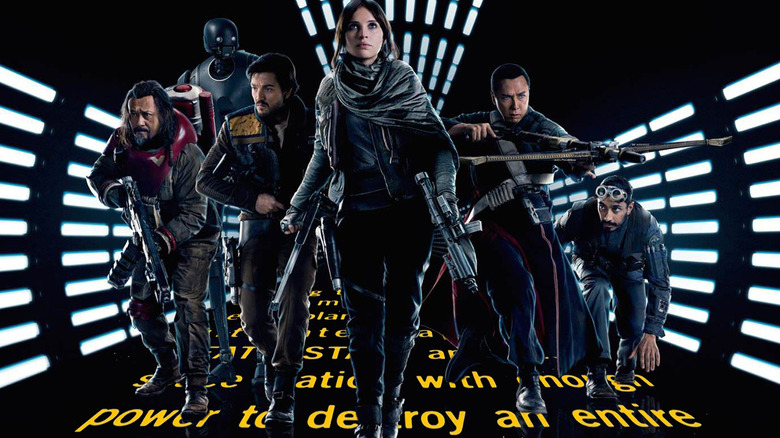
One of the biggest moments in modern Hollywood history occurred in 2012, when it was revealed that Disney was purchasing Lucasfilm from founder George Lucas for more than $4 billion. Not only did it mean Disney was making another splashy acquisition, and that Lucas was cashing out in a big way. It meant, above all else, that we were getting new "Star Wars" movies.
The new trilogy kicked off with director J.J. Abrams' "Star Wars: The Force Awakens" in 2015, which remains one of the biggest movies of all time. It was Episode VII in the Skywalker saga, and was firmly billed as a continuation of what had come before. But the real test of "Star Wars" as a more expansive franchise would come the following year with 2016's "Rogue One: A Star Wars Story."
In honor of the movie's fifth anniversary this week, we're looking back at the first-ever "Star Wars" standalone feature, how it came to be, the trouble it had to weather to make it to screen, and how it proved that this franchise could endure for decades to come -- so long as the new regime was willing to take some risks.
The Movie: Rogue One: A Star Wars Story
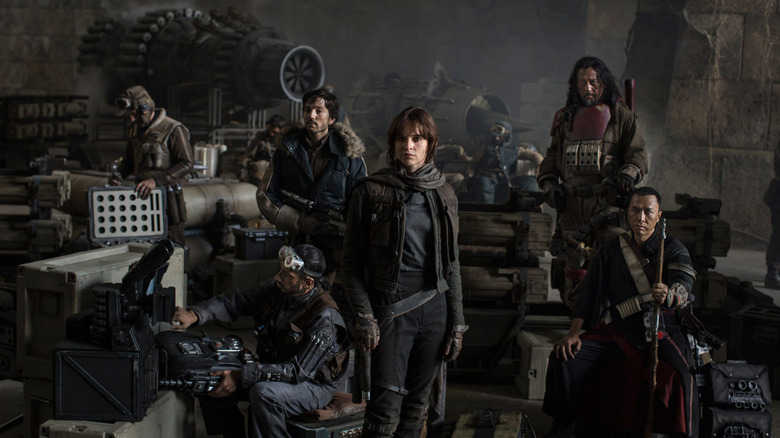
The initial seeds of "Rogue One" were planted years and years ago, dating back to the first moments anyone ever saw of "Star Wars" on screen. In the opening text crawl of George Lucas' seminal 1977 sci-fi flick, there were these two lines:
"Rebel spaceships, striking from a hidden base, have won their first victory against the evil Galactic Empire. During the battle, Rebel spies managed to steal secret plans to the Empire's ultimate weapon, the DEATH STAR, an armoured space station with enough power to destroy an entire planet."
Those two lines of yellow-lettered text ultimately went on to inspire an entire movie nearly 40 years later. John Knoll, the legendary visual effects guru who worked on several "Star Wars" movies, actually cooked up the initial idea. It was back when Lucas was developing a live-action TV show titled "Star Wars: Underworld" that ultimately never came to pass. As it just so happens, the Disney era of Lucasfilm opted to pick up this ball and run with it, turning it into the first non-saga entry in the franchise. That was a big deal. While expansive franchise universes have become all the rage, it can't be stated just how big of a deal this standalone spin-off was at the time.
Gary Whitt was originally hired to pen the script. Once he departed, Chris Weitz stepped in, working from Knoll's original story. In the end, Tony Gilroy would get script credit as well, as he came in to help usher the film through extensive reshoots. But before Gilroy's tenure came to pass, it was Gareth Edwards, coming off of 2014's "Godzilla," who landed the coveted gig in the director's chair.
A Messy Shoot
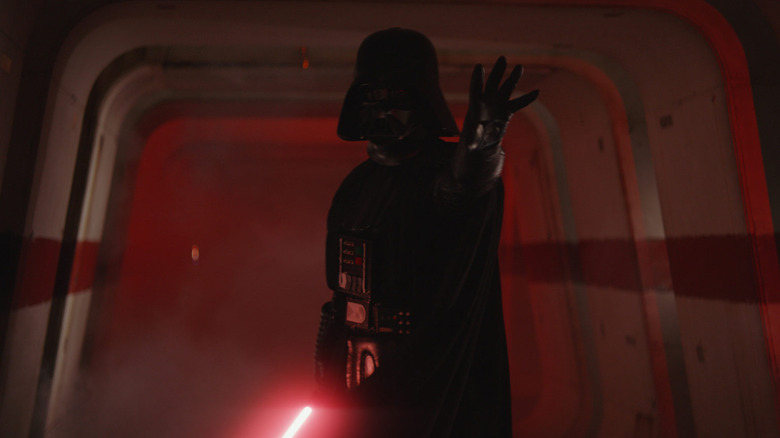
Edwards was coming off of a massive blockbuster, but had only directed the low-budget "Monsters" before that. He was an interesting choice, to say the least. "Star Wars: Rogue One" was introducing lots of new characters to the universe, led by Felicity Jones as Jyn Erso and Diego Luna as Cassian Andor (who will soon be appearing in his own prequel series on Disney+). We also had Jyn's father, Galen (Mads Mikkelsen), who engineered the Death Star against his will, and the malicious Orson Krennic, played by Ben Mendelsohn. Edwards was telling a gritty war tale going over an important event in "Star Wars" history that would prove whether or not this franchise could hold its own without the legacy characters, even though Darth Vader did appear in select scenes, which benefited the marketing greatly. Including that now-infamous hallway scene at the end of the movie that was added during the reshoots.
In any event, there were many plates to spin, and it proved to be a challenge. Filming kicked off in August 2015, leaving a little over a year to hit the December 2016 release date. In February 2016, a cut of the film was said to be nearly done, but things weren't quite that simple. Footage showed up in trailers that never made the final cut. Gilroy was eventually brought in to help get things in order. While the extent to which things were broken remains somewhat in question, Gilroy's account is pretty damning:
"That was my super power. I've never been interested in 'Star Wars,' ever. So I had no reverence for it whatsoever. I was unafraid about that. And they were in such a swamp ... they were in so much terrible, terrible, trouble that all you could do was improve their position."
So yeah, that doesn't sound great. Gilroy is said to have directed much of the reshoots and reworked aspects of the movie that weren't working. But as far as audiences are concerned, all that matters is the end result. And no matter how they got there, the result proved to be something that an awful lot of people wanted to see, and is widely considered to be one of the greatest things that Disney has made since purchasing Lucasfilm.
The Financial Journey
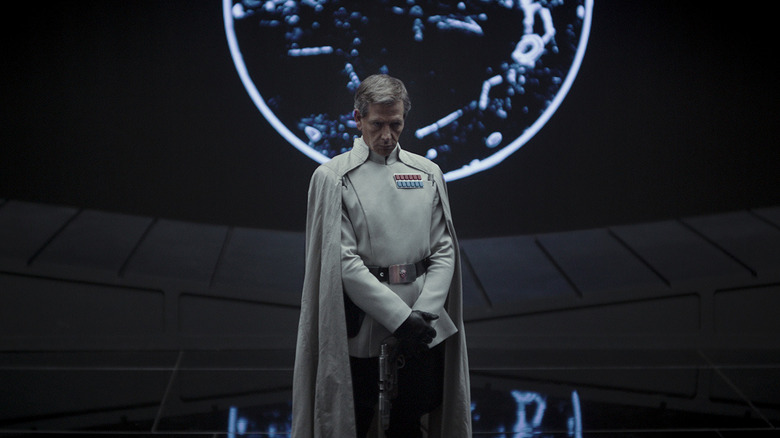
Despite the troubles during production, reshoots, and air of uncertainty, "Rogue One" debuted in theaters in the U.S. on December 16, 2016. To aid matters, it was met with generally solid reviews, currently boasting an 84% approval rating on Rotten Tomatoes. Also benefited by the hype that had hardly settled down from "The Force Awakens," the movie opened to an absolutely excellent $155 million. Only the sequel trilogy entries have had better opening weekends in the "Star Wars" franchise, with "The Force Awakens" leading the pack at $247 million.
It needs to be emphasized that this movie was not an easy sell to anyone outside of hardcore "Star Wars" fandom. Thus, it opening to nearly $100 million less than Episode VII should never be looked at as a misfire. This was an absolute win. While it did suffer a 58.7% drop in its second weekend, taking in $64 million, it performed well both in North America and abroad during its theatrical run, which lasted a total of 20 weeks domestically.
In the end, the tale of a band of Rebels who stole the Death Star plans made $532.1 million domestically, to go along with $523.8 million internationally. Yes, a movie that ultimately spawned from just two lines of text generated $1.05 billion at the box office. "Star Wars" connection or not, that's pretty damn impressive. While tiny corners of a galaxy far, far away have inspired countless storytelling over the years, this is easily the most prominent example of taking something small in this universe and making a big deal out of it, because it is one of the only fandoms in existence that can sustain such grand gestures, commercially speaking.
The Lessons Contained Within
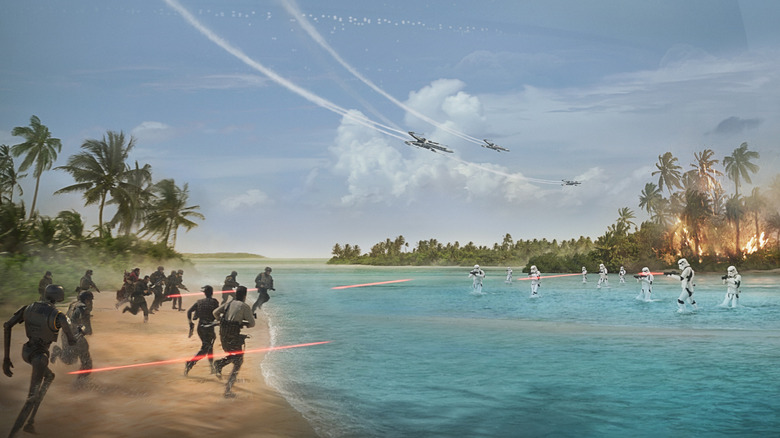
There are, perhaps, enough lessons from "Rogue One" to fill a book, particularly as it pertains to the brass at Disney and "Star Wars" as a global brand capable of generating billions in revenue. While I typically try to reserve this portion of the column to discuss lessons from a business perspective, this franchise means a lot to me and I think I'm going to take a moment to point out, from a fan's perspective, what should not be forgotten here.
The "Star Wars" sequels were almost always going to be guaranteed to make bank and, despite the mixed response to both "The Last Jedi" and "The Rise of Skywalker" (both of which were mixed for wildly different reasons), they all did, indeed, make bank. But "Star Wars" can't just be anchored to the past forever in that way. This is a vast galaxy with much to explore. Even though "Rogue One" was telling us a story that had been hinted at before, it did a lot of new things that we had never had the chance to see. It was a gritty war movie. It showcased darker parts of both sides of the war that we always intellectually knew were there but had never truly seen before.
In the end, this movie works just as well today (if not better today) than it did five years ago because it feels bold. It feels like the perfect combination of fresh and familiar. Is that an easy line to walk? No, it is not. "The Mandalorian" is perhaps the best example, in terms of live-action "Star Wars" storytelling, that has also walked this fine line quite well. I'd also throw "Star Wars Rebels" in the mix if we're extending to the realm of animation. But I digress.
My main point is, as we are awaiting the next era of "Star Wars" movies, whatever they may be, it is important to remember that being bold can pay off handsomely. "Solo" is a great example of attempting to answer questions nobody had, and that bet not paying off. I like the movie just fine, and I know it has a big fanbase, but the box office would tell you that the world at large didn't care how Han Solo got his name or why he calls Chewbacca Chewie. It's a vast galaxy with so much to explore, and the novels, comics, and video games have done that incredibly well over the years. Look to "Rogue One" as a shining example of what "Star Wars" can be, and what it probably should be.
Read this next: Star Wars Movie Villains Ranked Least To Most Powerful
The post Tales From the Box Office: Rogue One Turned Two Lines of Star Wars Text Into a Billion-Dollar Hit appeared first on /Film.
from /Film https://ift.tt/3F4TTTr
via IFTTT
Comments
Post a Comment